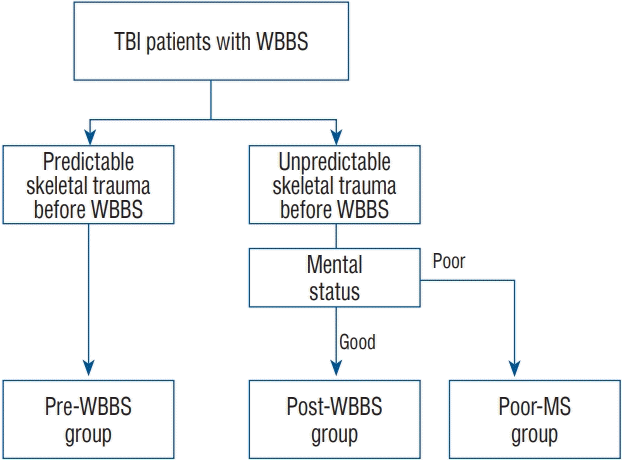1. Bauer GC. The use of radionuclides in orthopaedics. Radionuclide scintimetry of the skeleton. 1968. Clin Orthop Relat Res. 287:3–12. 1993.
2. Brooks A, Holroyd B, Riley B. Missed injury in major trauma patients. Injury. 35:407–410. 2004.

3. Deininger HK. Skeletal scintigraphy as an addition to the roentgenological examination in traumatology (author's transl). Radiologe. 21:35–45. 1981.
4. Enderson BL, Maull KI. Missed injuries. The trauma surgeon's nemesis. Surg Clin North Am. 71:399–418. 1991.

5. Frawley PA, Mills JA, Murton F, Ware R. Bone scanning in the multiply injured patient. Aust N Z J Surg. 65:390–393. 1995.

6. Garland DE, Bailey S. Undetected injuries in head-injured adults. Clin Orthop Relat Res. 155:162–165. 1981.

7. George MP, Bixby S. Frequently missed fractures in pediatric trauma: a pictorial review of plain film radiography. Radiol Clin North Am. 57:843–855. 2019.
8. Heinrich SD, Gallagher D, Harris M, Nadell JM. Undiagnosed fractures in severely injured children and young adults. Identification with technetium imaging. J Bone Joint Surg Am. 76:561–572. 1994.

9. Hirshberg A, Wall MJ Jr, Allen MK, Mattox KL. Causes and patterns of missed injuries in trauma. Am J Surg. 168:299–303. 1994.

10. Huang HC, Fu CY, Hsieh CH, Wang YC, Wu SC, Chen RJ, et al. Lodox/Statscan facilitates the early detection of commonly overlooked extracranial injuries in patients with traumatic brain injury. Eur J Trauma Emerg Surg. 38:319–326. 2012.

11. Janjua KJ, Sugrue M, Deane SA. Prospective evaluation of early missed injuries and the role of tertiary trauma survey. J Trauma. 44:1000–1007. 1998.

12. Kremli MK. Missed musculoskeletal injuries in a university hospital in Riyadh: types of missed injuries and responsible factors. Injury. 27:503–506. 1996.

13. Lee KJ, Jung K, Kim J, Kwon J. Bone scan as a screening test for missed fractures in severely injured patients. Orthop Traumatol Surg Res. 100:953–957. 2014.

14. Lee WC, Chen CW, Lin YK, Lin TY, Kuo LC, Cheng YC, et al. Association of head, thoracic and abdominal trauma with delayed diagnosis of coexisting injuries in critical trauma patients. Injury. 45:1429–1434. 2014.

15. Mackersie RC, Shackford SR, Garfin SR, Hoyt DB. Major skeletal injuries in the obtunded blunt trauma patient: a case for routine radiologic survey. J Trauma. 28:1450–1454. 1988.
16. Mrozek S, Gaussiat F, Geeraerts T. The management of femur shaft fracture associated with severe traumatic brain injury. Ann Fr Anesth Reanim. 32:510–515. 2013.

17. Probst C, Pape HC, Hildebrand F, Regel G, Mahlke L, Giannoudis P, et al. 30 years of polytrauma care: an analysis of the change in strategies and results of 4849 cases treated at a single institution. Injury. 40:77–83. 2009.

18. Schmidt C, Deininger HK. The occult fracture in the roentgen picture and its detection using bone scintigraphy. Radiologe. 25:104–107. 1985.
19. Sobus KM, Alexander MA, Harcke HT. Undetected musculoskeletal trauma in children with traumatic brain injury or spinal cord injury. Arch Phys Med Rehabil. 74:902–904. 1993.
20. Soundappan SV, Holland AJ, Cass DT. Role of an extended tertiary survey in detecting missed injuries in children. J Trauma. 57:114–118. 2004.

21. Ward WG, Nunley JA. Occult orthopaedic trauma in the multiply injured patient. J Orthop Trauma. 5:308–312. 1991.

22. Wei CJ, Tsai WC, Tiu CM, Wu HT, Chiou HJ, Chang CY. Systematic analysis of missed extremity fractures in emergency radiology. Acta Radiol. 47:710–717. 2006.

23. Yang DC, Ratani RS, Mittal PK, Chua RS, Pate SM. Radionuclide threephase whole-body bone imaging. Clin Nucl Med. 27:419–426. 2002.







 PDF
PDF Citation
Citation Print
Print



 XML Download
XML Download